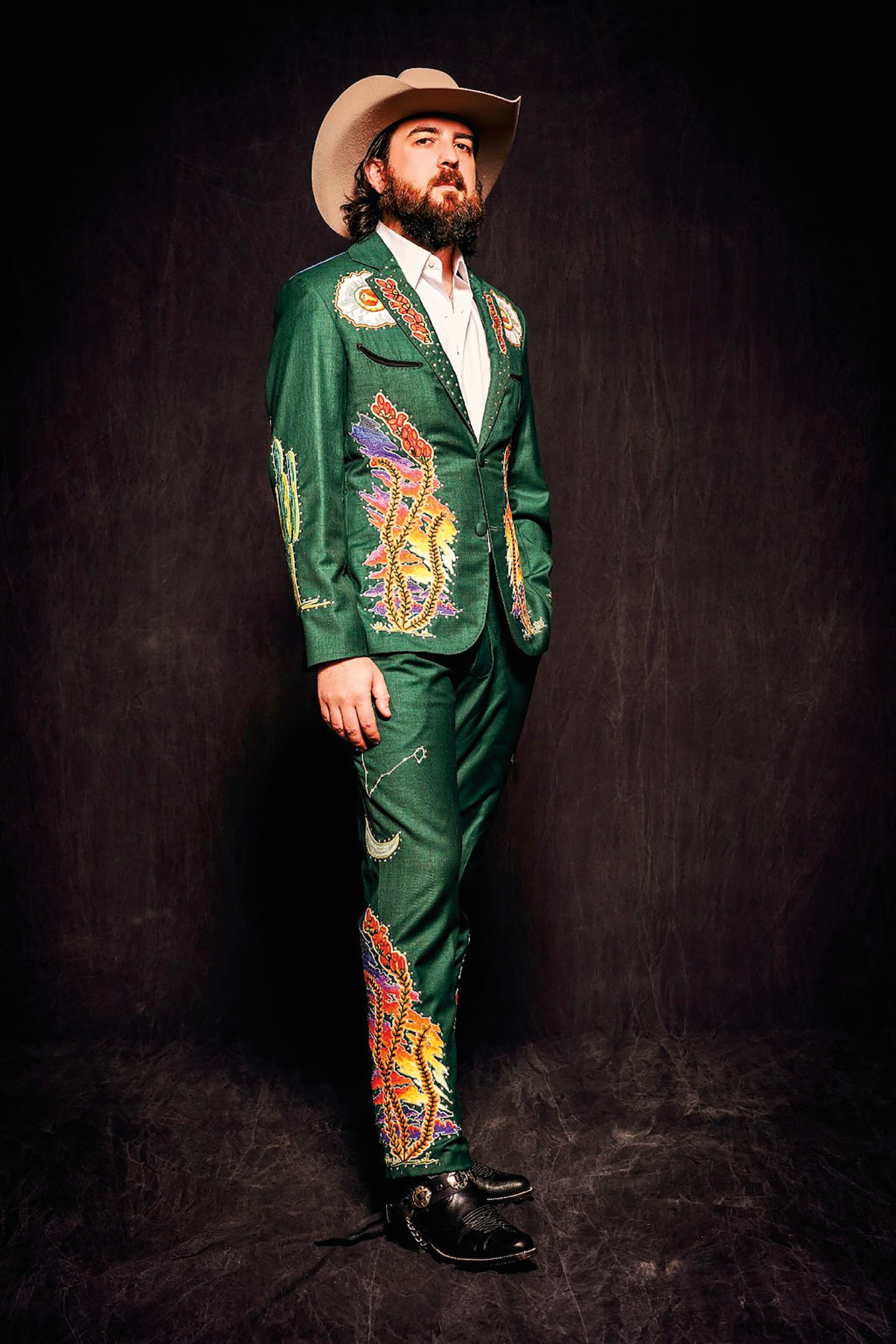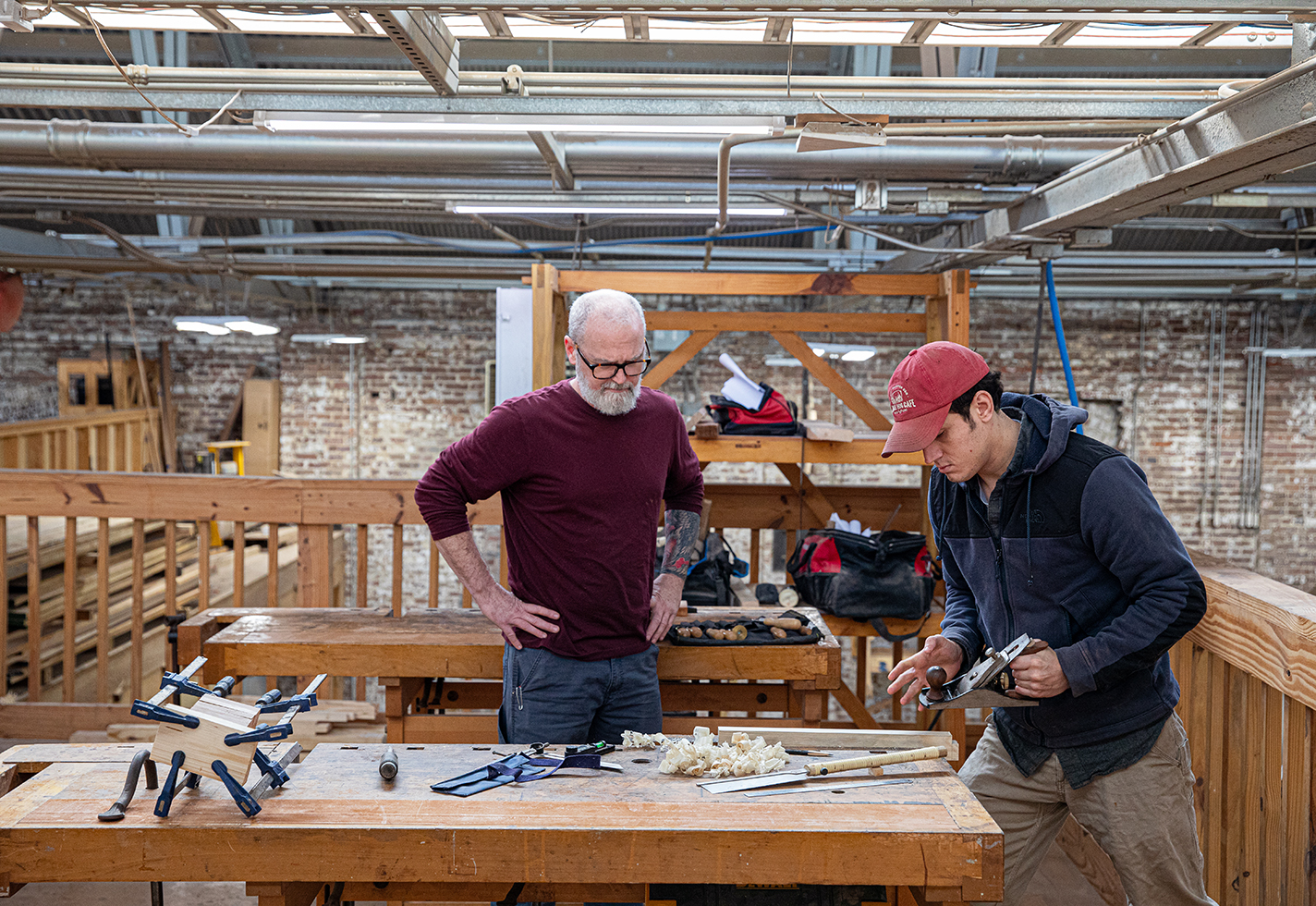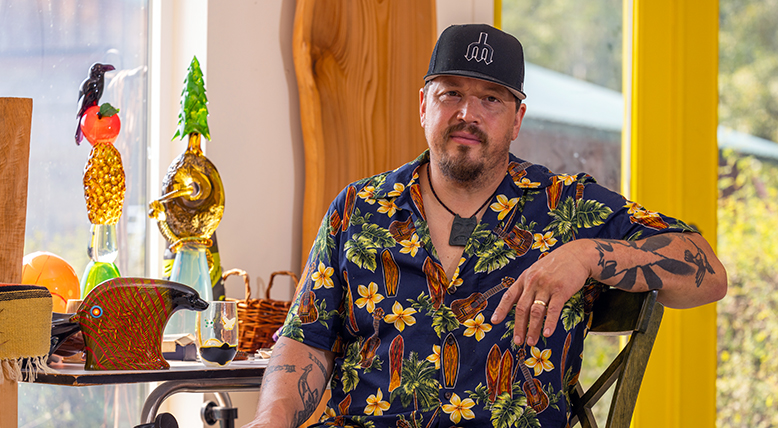You walk a little differently when you wear something this cool. You hold your head high, square your shoulders, kick your heels a little. “A moment,” you might caption your Instagram post, “for the suit.” And you’d be right—from the exquisite tailoring to the sheen of the cloth to every single image stitched, rhinestoned, or appliquéd on its surface.
Did you choose twin thunderbolts on the arms, lapels with gold-stitched arrows, a heliotrope-and-tangerine ombré sunset down the back? Pant legs with prickly pear cacti, California poppies, and all-seeing eyes? Or were you drawn to the purple velvet hot pants with turquoise fringe, complemented by a matching hat? Whatever the choice, you’re ready for the stage, to sing, to voice your vows, to draw every gaze.
This is your bespoke suit from Fort Lonesome, the Austin, Texas–based chain stitch, stage costume, and custom Western wear atelier. The company’s wearable art has been seen on the likes of Jenny Lewis (her white pantsuit festooned with marijuana lit up social media in 2016), Diplo (in 2019, both Vogue and GQ gushed over his cream suit emblazoned with his name over a huge MTV Moonman), actor Matthew McConaughey, singer Nikki Lane . . . the list goes on.
Bespoke stage wear and custom suiting are the most luxe level of the studio’s work, each outfit taking the dedicated team of eight upwards of 200 hours to painstakingly build by hand. You can also customize a Western pearl-snap shirt (Bill Murray sports an armadillo-ed number), or take your pick of myriad off-the-shelf patches to bring that signature psychedelic cowboy vibe to anything you own.
“Lovingly, the Fort carries forth the torch of the Rodeo Tailor,” reads Fort Lonesome’s artist statement, “aiming to midwife the legacy of the craft into its rightful place as an iconic evergreen opportunity to innovate, narrate, and adorn.” This has been the vision of founder Kathie Sever since 2013, and looking back, she is bowled over by how far they’ve come.
In 2006 Sever bought a 1918 Singer 114w103 chain stitch machine. “We knew that it was the machine that was used for traditional Western wear,” she says. “But no one knew how to use it.” Not the Austin-area Western wear folks, not the sewing machine technicians Sever reached out to, not even her craft community. At that point, there wasn’t even any advice to be found online. “I’d mess around with it from time to time,” Sever remembers. But any chain stitch work she did in those years for Ramonster, her popular children’s Western wear line at the time, was done entirely by hand. Finally, out of the blue in 2011, an owner of one of the machines sent instructions he’d collected online from other makers. In no time, the Singer was up and running, and a breathless series of fortunate connections ushered in Fort Lonesome’s founding and whirlwind beginnings.

A custom chain-stitched wedding suit by Fort Lonesome, silk/wool fabric, wool thread, and rhinestones.







